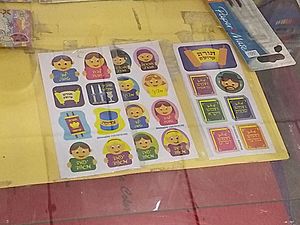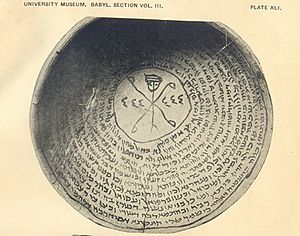Jewish languages facts for kids
Jewish languages are special languages and dialects that developed among Jewish communities around the world. The very first Jewish language was Hebrew. Later, Aramaic became very important, especially after the Babylonian exile. Jewish languages are often a mix of ancient Hebrew and Aramaic words, combined with the languages spoken by the non-Jewish people living nearby.
How Jewish Languages Developed
For hundreds of years, Jewish people living in different places spoke the local languages. But they often changed these languages a bit, creating their own unique versions or even entirely new languages.
These languages usually grew by adding Hebrew words, phrases, and sometimes even grammar rules. This helped them talk about ideas and concerns that were special to Jewish life. Often, these languages were written using Hebrew letters, including the block letters we see in Hebrew today and a special style called Rashi script.
Major Jewish Languages
Some of the most widely spoken Jewish languages that grew outside of Israel include Yiddish, Ladino, and a group of languages called Judæo-Arabic.
- Yiddish is a Judeo-German language. It was developed by Ashkenazi Jews who moved to Central Europe.
- Ladino is also known as Judezmo or Muestra Spanyol (which means "our Spanish"). It's a Judeo-Spanish language created by Sephardic Jews who lived in the Iberian Peninsula (modern-day Spain and Portugal).
In the 1850s, Yiddish was the language spoken by the largest number of Jewish people. Today, the three most common languages among Jewish people are English, modern Hebrew, and Russian.
Images for kids
-
Signpost in Israel, showing directions in Hebrew, Arabic, and transliterated into Latin script.
-
Signs in English and Yiddish in the predominantly Hasidic area of Kiryas Joel, New York.
See also
 In Spanish: Lenguas judías para niños
In Spanish: Lenguas judías para niños






